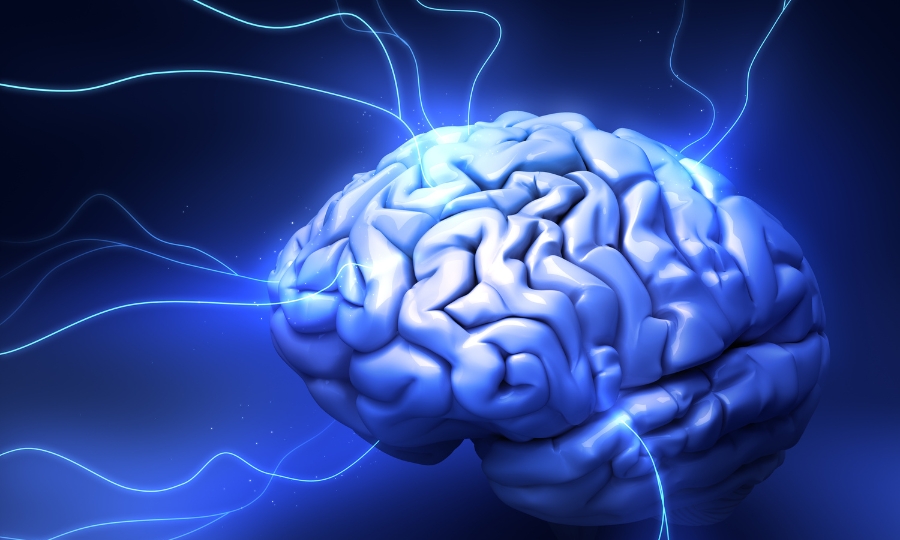Most people see jerking of the arms or legs as inconvenient, but few realize the dangers it can pose to those who struggle with them. When the body becomes harder to control due to nervous system problems, you need a solution. Pain and Performance Solutions has a very effective solution known as NKT.
“Pain is inevitable, suffering is optional.” —Buddhist Proverb
NeuroKinetic Therapy (NKT) is an evidence-based treatment protocol that evaluates and treats dysfunctional movement patterns in the body. It is based on the principles of motor learning and neuroscience and uses these principles to retrain the nervous system to move more efficiently.
NKT is a highly effective treatment for a wide variety of conditions, including chronic pain, orthopedic injuries, neurological disorders, and performance issues. It can help treat both acute and chronic problems and has been shown to be particularly effective in treating difficult-to-resolve cases.
NKT is a safe, non-invasive treatment that is suitable for people of all ages and levels of fitness. It is often used as an adjunct to other forms of treatment, such as physiotherapy or chiropractic care, and can be an important part of a comprehensive rehabilitation program.
If you are suffering from pain or dysfunction that has not responded to other forms of treatment, NeuroKinetic Therapy may be able to help. Pain and Performance Solutions offers NKT assessment and treatment services from our team of highly trained therapists. Reach out today to learn more about how we can help you achieve your optimum level of function.
The Origins of NeuroKinetic Therapy
NeuroKinetic Therapy (NKT) is a cutting-edge, manual therapy approach that assesses and corrects dysfunctional movement patterns that are often the root cause of pain. NKT was developed by physical therapist David Weinstock in the early 2000s.
The inspiration for NKT came from Weinstock’s own experience with chronic pain and frustration with the traditional medical model’s approach to treating it. In traditional medicine, pain is often seen as an isolated event or symptom to be treated without addressing the underlying cause. This “symptom management” approach did not provide long-term relief for Weinstock or his patients.
Weinstock began to develop NKT after witnessing firsthand the success of another manual therapy technique, Functional Movement Systems (FMS). FMS uses specific tests to assess functional movement patterns and identify areas of dysfunction. Weinstock was inspired by FMS’s ability to quickly and effectively identify movement dysfunctions, but he felt that it lacked a comprehensive treatment approach.
NKT addresses dysfunctional movement patterns through a combination of assessment, education, and hands-on treatment. The goal of NKT is to re-train the nervous system to move more efficiently and improve overall function. To do this, NKT practitioners use a variety of techniques, including muscle testing, soft tissue mobilization, joint manipulation, and dry needling.
NKT has been shown to be an effective treatment for a variety of musculoskeletal conditions, including chronic neck and back pain. It has also been used to improve sports performance, reduce the risk of injury, and manage acute and chronic pain.

Principles of NeuroKinetic Therapy
NeuroKinetic Therapy is based on the body’s natural ability to heal itself. NKT addresses the root cause of pain and injury by correcting dysfunctional patterns in the nervous system, which allows the body to heal itself.
The nervous system is comprised of the brain, spinal cord, and nerves. The brain is the control center for the nervous system as a whole. The spinal cord is what carries messages from the brain to the rest of the body. The nerves are similar to electrical wires that bring messages back and forth between the brain and spinal cord like wires bring electricity to buildings and back to the power grid.
NKT uses muscle testing to assess which muscles are not working properly. Muscle testing is a way of assessing how well a muscle is working by seeing how strong it is when contracting against resistance.
There are two types of muscle testing: manual muscle testing (MMT) and neuro-muscular tests (NMT). MMT is done by a therapist using their hands to apply pressure to a muscle while the patient contracts the muscle against that pressure. NMT uses electrical stimulation to test muscle function.
Once dysfunctional patterns are identified, NKT uses specific exercises, manipulations, and techniques to correct those patterns, allowing the body to heal itself. NKT is a safe, effective, and non-invasive approach to treating ongoing pain and many types of sports injuries.
Benefits of NeuroKinetic Therapy
By re-training the nervous system to properly communicate with the muscles, NKT can help to reduce pain, prevent injuries, and improve overall physical performance. Some of the many benefits of NeuroKinetic Therapy include:
- Pain reduction and injury prevention: NKT can help to address the underlying causes of pain, helping to reduce or eliminate it altogether. It can also help to prevent future injuries by retraining the muscles and nervous system to work together more efficiently.
- Improved athletic performance: By improving communication between the muscles and nervous system, NKT can help athletes reach their full potential. It can also help them recover from injury more quickly and prevent future injuries.
- Enhanced posture and body awareness: NKT can help improve your posture by retraining your muscles to work together more efficiently. It can also help you become more aware of your body and how it moves, helping you move more gracefully and with greater ease.
- Accelerated recovery from injury: Because NKT helps to re-train the muscles and nervous system, it can speed up the recovery process from an injury. In some cases, it may even be possible to avoid surgery altogether.
- Greater overall physical functionality: By improving communication between the muscles and nervous system, NKT can help improve your overall physical functioning. This includes increased strength, flexibility, range of motion, and balance.

Let Pain and Performance Solutions Ease Your Pain with NeuroKinetic Therapy
NeuroKinetic Therapy is a powerful tool for unlocking and addressing the underlying causes of pain and dysfunction. It can help identify and target tight, weak, or inhibited muscle groups so that they can be treated accordingly.
With its unique approach to treating chronic muscle pain and providing relief from postural issues, it has become one of the most sought-after treatments in modern physical therapy practices.
If you’re looking for safe yet effective solutions to reduce your chronic pain levels or improve your posture, contact us at Pain and Performance Solutions today to see how we can help you through NeuroKinetic Therapy! Just call us at 707-636-4404 or you can book an appointment online to set up an appointment to begin feeling better!
Frequently Asked Questions
1. What is NeuroKinetic Therapy (NKT)?
NeuroKinetic Therapy (NKT) is a manual therapy that identifies and corrects dysfunctional movement patterns, often the root cause of chronic pain and injuries. By retraining the nervous system, it helps the body move more efficiently, improving pain management and performance.
2. How does NeuroKinetic Therapy work?
NKT uses muscle testing to detect imbalances in the body. Through specific exercises and manipulations, it reprograms the nervous system to restore proper movement, enhancing physical function and reducing pain.
3. Can NKT help with chronic pain?
Yes, NKT addresses the underlying causes of chronic pain by correcting faulty movement patterns, offering long-term relief for issues that haven’t responded to traditional treatments.
4. Is NeuroKinetic Therapy safe for everyone?
Yes, NKT is a non-invasive, safe therapy suitable for people of all ages and fitness levels. It’s commonly used alongside physiotherapy or chiropractic care to optimize recovery.
5. What conditions can NKT treat?
NKT is effective for treating a wide range of issues, including chronic pain, sports injuries, orthopedic problems, and neurological disorders. It’s also known for improving athletic performance and preventing injuries.
6. How does NKT improve athletic performance?
By retraining the nervous system and muscles to work more efficiently, NKT enhances movement patterns, boosts strength, and reduces injury risk, helping athletes perform better.
7. Can NKT speed up injury recovery?
Yes, by correcting dysfunctional movement patterns, NKT accelerates healing and can even help patients avoid surgery in certain cases.
8. How is NKT different from other therapies?
NKT focuses on the root cause of pain—dysfunctional movement patterns—rather than just treating symptoms. This makes it an effective and lasting solution for many chronic issues.
9. How long does it take to see results from NKT?
Many patients notice improvements after just one session, although multiple sessions may be needed for lasting results, especially for chronic or complex conditions.
10. Can NKT be used with other therapies?
Absolutely. NKT is often combined with other treatments like chiropractic care or physical therapy to enhance the overall effectiveness of rehabilitation and recovery.



